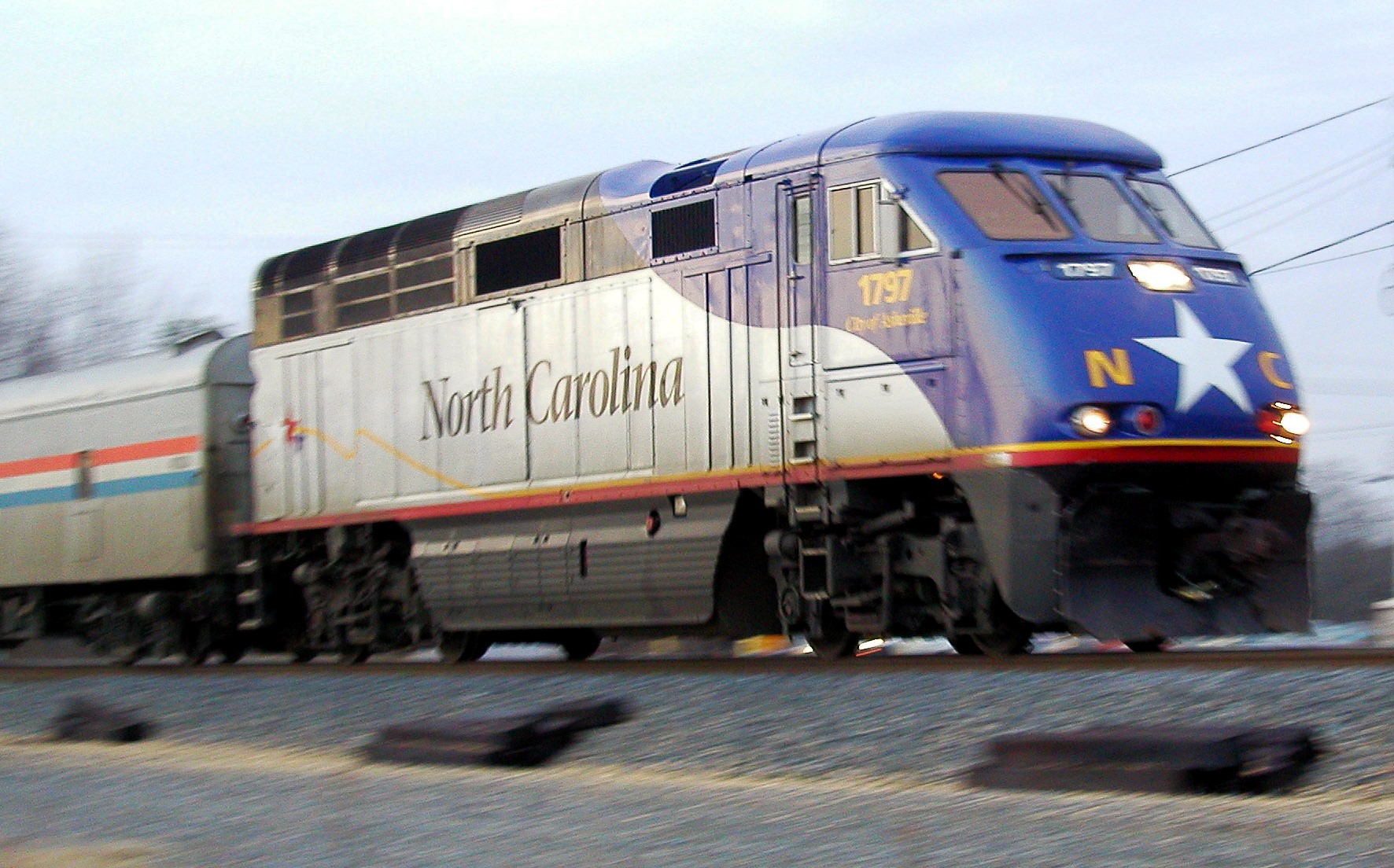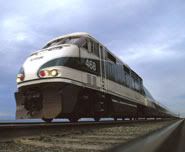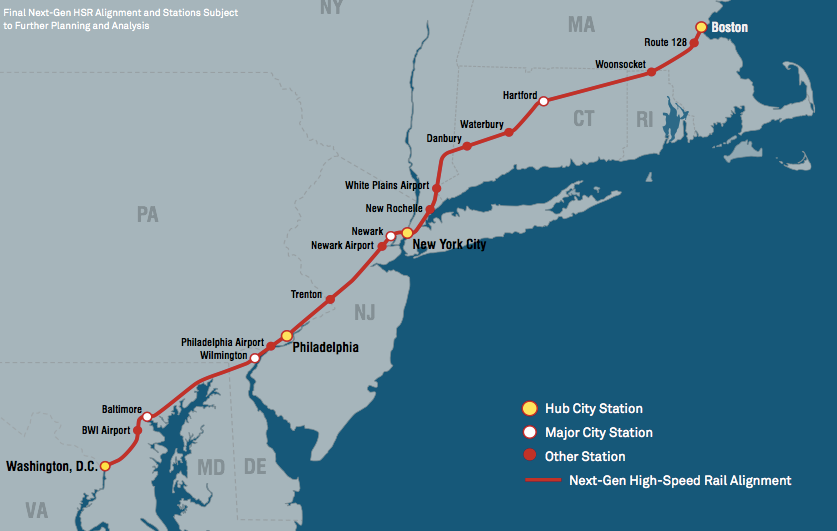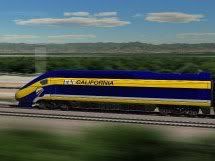{Reprinted from the Hillbilly Report.org, April 21, 2009.}
{ Except for updating images to correct for link rot, edits in braces and italics.}
 This last weekend I wrote up a small diary, cross-posted to various places … which even stumbled into being wrecklisted at Agent Orange … about the High Speed Rail plan released by the Obama administration.
This last weekend I wrote up a small diary, cross-posted to various places … which even stumbled into being wrecklisted at Agent Orange … about the High Speed Rail plan released by the Obama administration.
That diary focused on laying out the three “tiers” of HSR in the announced plan. “Express HSR” is one of the bullet train systems, like they are planning for California. But between that tier and conventional rail, are two more tiers:
- “Regional HSR”, with a top speed of around 125mph, able to provide trips at average speeds in the range of 100mph, operating in existing rail rights of way, but mostly on its own track, with upgraded signaling and substantial investment in grade separation and/or the top level of “hardened” level crossings, normally with electrified lines; and
- “Emerging HSR”, with a top speed of 110mph, able provide trips at average speed in excess of 80mph, operating on existing rail right of way with improved capacity, but sometimes sharing track with freight rail, the 110mph standard of quad gate, speed sensitive level crossings, and provided by either electric or diesel 110mph tilt-trains
The bullet trains are the show ponies … but for small town and rural America, the genuine seat at the table for Emerging and Regional HSR is the real good news from the announcement.

 At the beginning of last month, Paul Druce of “Reason & Rail” discussed the possible impact of the pending upgrade of the Amtrak Acela route in
At the beginning of last month, Paul Druce of “Reason & Rail” discussed the possible impact of the pending upgrade of the Amtrak Acela route in  The Southeast HSR corridor can be divided between the “real” SEHSR corridor, where there is actual, ongoing work on improving the speed and, even more critically, the capacity of the corridor in support of services that will begin operating within the current decade, and the “notional” SEHSR corridor, the land of feasibility studies and preliminary planning, where even if a pedal to the metal intercity rail investment program were to commence in 2017, any new services entering into operation before the latter half of next decade would be subsidized conventional rail service.
The Southeast HSR corridor can be divided between the “real” SEHSR corridor, where there is actual, ongoing work on improving the speed and, even more critically, the capacity of the corridor in support of services that will begin operating within the current decade, and the “notional” SEHSR corridor, the land of feasibility studies and preliminary planning, where even if a pedal to the metal intercity rail investment program were to commence in 2017, any new services entering into operation before the latter half of next decade would be subsidized conventional rail service. I saw
I saw  I’ve posed a question in the title of this week’s Sunday Train that I have no intention of answering myself.
I’ve posed a question in the title of this week’s Sunday Train that I have no intention of answering myself. Last week,
Last week,  Today, the focus is on one lovely rhetorical ploy used by anti-rail advocates to try to put one over on people with limited experience with trains. This relies on the false framing that “trains is trains”, and uses something that is true about a particular kind of local rail transport to mislead people about 110mph Emerging High Speed Rail in particular.
Today, the focus is on one lovely rhetorical ploy used by anti-rail advocates to try to put one over on people with limited experience with trains. This relies on the false framing that “trains is trains”, and uses something that is true about a particular kind of local rail transport to mislead people about 110mph Emerging High Speed Rail in particular. This is more or less the three year anniversary of the first Sunday Train ~ a bit less than more, since this is the 12th of August 2012 and I think that the first Sunday Train was 16th of August, 2009. It emerged from a variety of blogging I had been doing over the previous couple of years, with a notion that if I set down a target of blogging on Sunday, it would make it easier for people to track the Sunday Train down. It was originally posted at my midnight-populist blogspot,
This is more or less the three year anniversary of the first Sunday Train ~ a bit less than more, since this is the 12th of August 2012 and I think that the first Sunday Train was 16th of August, 2009. It emerged from a variety of blogging I had been doing over the previous couple of years, with a notion that if I set down a target of blogging on Sunday, it would make it easier for people to track the Sunday Train down. It was originally posted at my midnight-populist blogspot,  One of the transit bloggers that I enjoy reading is Alon Levy who blogs his observations on a variety of transit topics at
One of the transit bloggers that I enjoy reading is Alon Levy who blogs his observations on a variety of transit topics at  California is on a deadline from DC to either appropriate the funds to begin work on the first segment of the California HSR project, or else the Dept. of Transport will rescind California’s grant and hand the money over to other states.
California is on a deadline from DC to either appropriate the funds to begin work on the first segment of the California HSR project, or else the Dept. of Transport will rescind California’s grant and hand the money over to other states.
Recent Comments